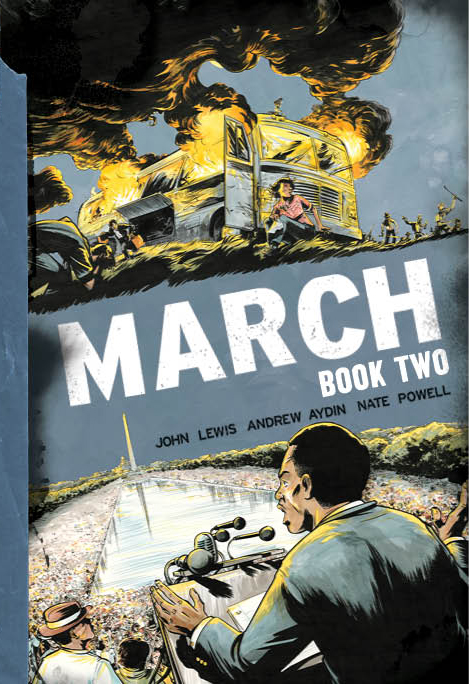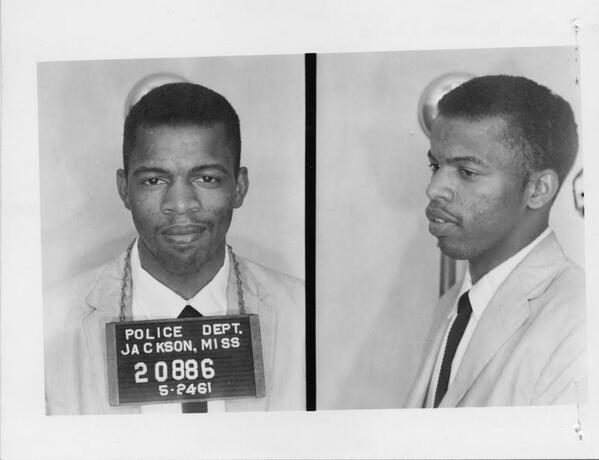The second installment in March, Rep. John Lewis’ acclaimed graphic memoir trilogy on the civil rights movement, picks up where the first volume left off, but this book is more handbook than history lesson.
“I see some of the same manners, some of the same thinking, on the part of young people today that I witnessed as a student,” the Georgia Congressman, 74, told the New York Times. “The only thing that is so different is that I don’t think many of the young people have a deep understanding of the way of nonviolent direct action.”
March: Book Two, released in January, offers a robust crash course. This book centers on a young Lewis and his increasing responsibility within the movement from 1960 to 1963. The graphic memoir opens on young protesters staging a sit-in at a Nashville lunch counter. The peaceful protest soon turned ugly as the restaurant owner deployed a fumigating device to drive away the demonstrators. Lewis, by then seasoned, was still in disbelief: “Were we not human to him?”
Those sit-ins led to the Freedom Rides of 1961. In his letter to organizer Fred Shuttlesworth, Lewis was resolute in his desire to participate: “This is the most important decision in my life — to decide to give up all if necessary for the freedom ride, that justice and freedom might come to the deep south.”
The harrowing bus rides — orchestrated to test the new anti-segregation bus laws made possible by the Supreme Court ruling in Boynton v. Virginia — unleashed angry mobs that bloodied and battered many of the riders. This led to conflict within the movement, with divisions growing between members of the Student Nonviolent Coordinating Committee. (Lewis would later become chairman.)
The book culminates with the March on Washington for Jobs and Freedom, where a 23-year-old Lewis spoke sixth. A sense of relief settles in for the reader, yet it doesn’t last long. The final pages are a sledgehammer to the gut. It is clear: there is much more work to do.
Interwoven with this narrative is the historic 2009 inauguration of Barack Obama, shown through Lewis’ eyes. The juxtaposition is stirring but somber.
Lewis’ goal is not simply to explain the methods of the movement, but also the soul. Book Two’s greatest strength is its focus on sacrifice — the graphic memoir centers on the physical, emotional and financial price paid by those at the forefront of the movement. Lewis praises his comrades repeatedly for their intellect and fortitude, allowing them to shine alongside King. (He is particularly fond of A. Phillip Randolph, noting, “If he had been born at another time, he could’ve been president.”)
Lewis’ senior aide Andrew Aydin is a co-writer, as he was for the first book. Both are illustrated by award-winning cartoonist Nate Powell, who does exceptionally detailed work here. Almost two years ago, March: Book One became required reading for first-year students at several major universities. Moreover, schools in more than 40 states are teaching March at the elementary, middle, and high school levels. USA Today and The Washington Post named it one of the top books of 2013.
At the debut of March, Lewis said, “I hope that this book will inspire another generation of people to get in the way, find a way to get into trouble, good trouble, necessary trouble.”



